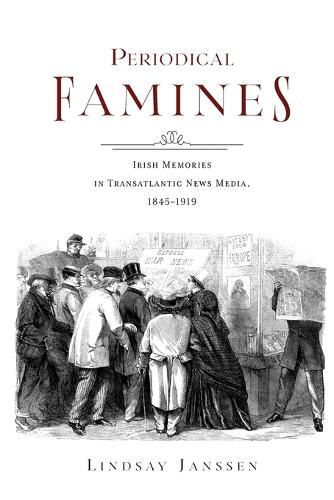Readings Newsletter
Become a Readings Member to make your shopping experience even easier.
Sign in or sign up for free!
You’re not far away from qualifying for FREE standard shipping within Australia
You’ve qualified for FREE standard shipping within Australia
The cart is loading…






This title is printed to order. This book may have been self-published. If so, we cannot guarantee the quality of the content. In the main most books will have gone through the editing process however some may not. We therefore suggest that you be aware of this before ordering this book. If in doubt check either the author or publisher’s details as we are unable to accept any returns unless they are faulty. Please contact us if you have any questions.
Long recognized as Ireland's greatest demographic disaster in recent history, the Great Famine of 1845-1851 has shaped Irish identities around the world. From the monuments erected to commemorate its victims to the political rhetoric involving it to the novels, poems, songs, and films that it continues to inspire, the Famine remains a crucial part of Irish memory. Famine memories have also reached across history and national borders to establish links with cultural groups who were not directly connected to the Irish diaspora.
Periodical Famines reveals how, within the transatlantic Irish periodical market between 1845 and 1910, Irish, Irish American, and Irish Canadian newspapers and magazines acted as carriers and shapers of cultural identities. Lindsay Janssen argues that famine memory was deployed transhistorically to help represent other crucial events in the Irish past, and periodicals used Famine recollections transnationally to give new meaning to events outside of Ireland, such as labor issues in the United States and the Second Boer War. Moving beyond individual writings to interrogate how different texts printed within a periodical issue influenced each other and affected audiences' attitudes to Irish hunger and distress, Janssen's cotextual approach reveals the intricate and sometimes divergent paths that Famine memory traveled through in the decades during and after its onset.
Drawing upon a substantial corpus of creative and nonfiction periodical publications (including nearly 600 works of poetry and prose fiction), Periodical Famines is a thorough analysis of transatlantic Irish periodical culture during and after the Great Famine, demonstrating how periodicals' transmission of famine memories shaped global cultures.
$9.00 standard shipping within Australia
FREE standard shipping within Australia for orders over $100.00
Express & International shipping calculated at checkout
This title is printed to order. This book may have been self-published. If so, we cannot guarantee the quality of the content. In the main most books will have gone through the editing process however some may not. We therefore suggest that you be aware of this before ordering this book. If in doubt check either the author or publisher’s details as we are unable to accept any returns unless they are faulty. Please contact us if you have any questions.
Long recognized as Ireland's greatest demographic disaster in recent history, the Great Famine of 1845-1851 has shaped Irish identities around the world. From the monuments erected to commemorate its victims to the political rhetoric involving it to the novels, poems, songs, and films that it continues to inspire, the Famine remains a crucial part of Irish memory. Famine memories have also reached across history and national borders to establish links with cultural groups who were not directly connected to the Irish diaspora.
Periodical Famines reveals how, within the transatlantic Irish periodical market between 1845 and 1910, Irish, Irish American, and Irish Canadian newspapers and magazines acted as carriers and shapers of cultural identities. Lindsay Janssen argues that famine memory was deployed transhistorically to help represent other crucial events in the Irish past, and periodicals used Famine recollections transnationally to give new meaning to events outside of Ireland, such as labor issues in the United States and the Second Boer War. Moving beyond individual writings to interrogate how different texts printed within a periodical issue influenced each other and affected audiences' attitudes to Irish hunger and distress, Janssen's cotextual approach reveals the intricate and sometimes divergent paths that Famine memory traveled through in the decades during and after its onset.
Drawing upon a substantial corpus of creative and nonfiction periodical publications (including nearly 600 works of poetry and prose fiction), Periodical Famines is a thorough analysis of transatlantic Irish periodical culture during and after the Great Famine, demonstrating how periodicals' transmission of famine memories shaped global cultures.